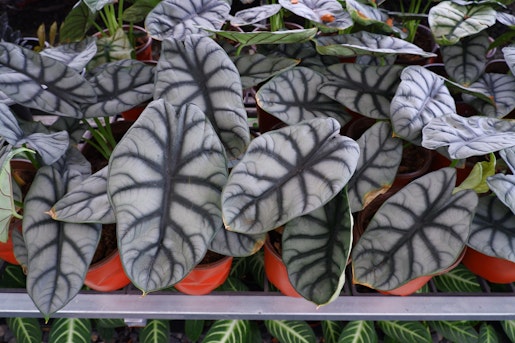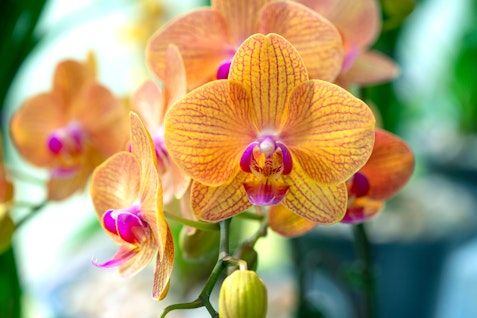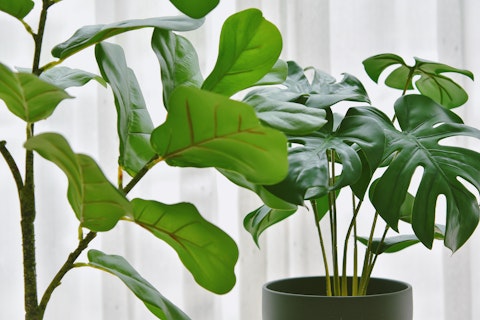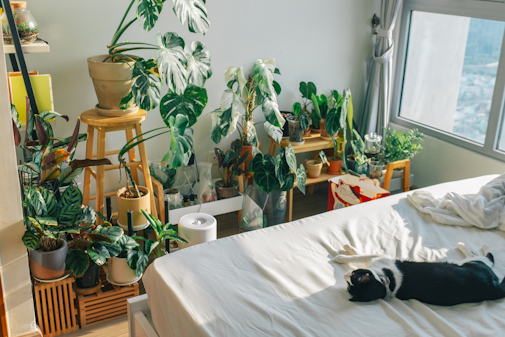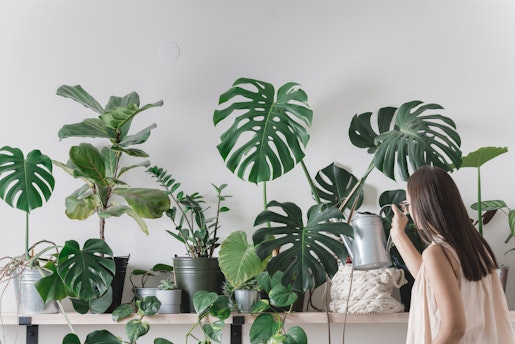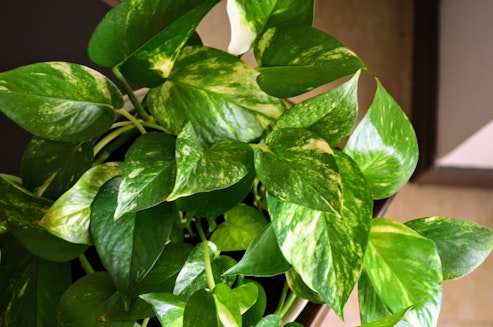
- Home
- Propagating Hoya: Tips for Successful Propagation
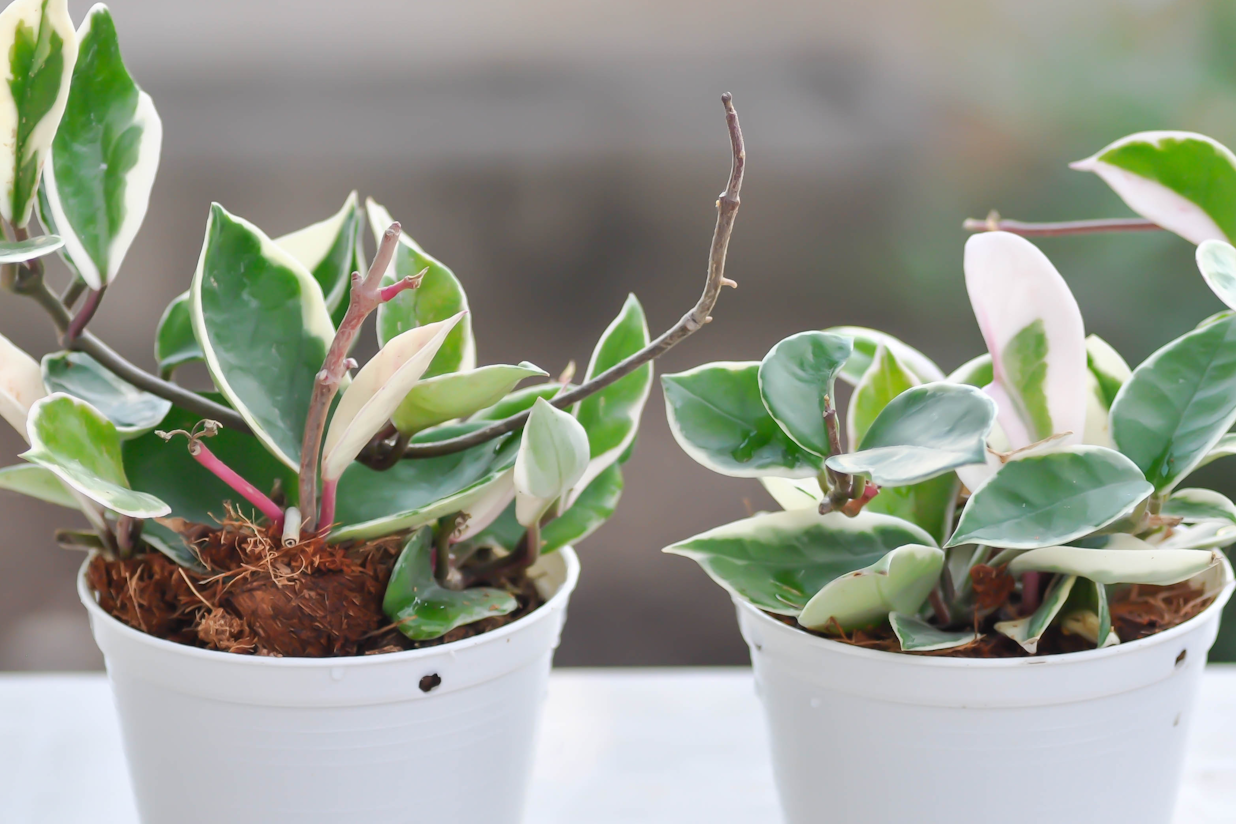
“What is a Hoya?” is a question we get asked frequently by plant-keeping newcomers, and no question excites me more. It means I get to explain these really cool, dynamic, colourful and fascinating plants to people. It is said that Hoya are an acquired taste, and I agree… acquired as soon as you look at one! At least for me anyway.
The genus Hoya contains up to 500 species of tropical plants, native to the tropical and temperate regions of East and South East Asia and Northern Australia. They are mostly epiphytes or lithophytes that grow upon other plants or rocks, and have a tendency to creep or climb. Some hoya even have close symbiotic relationships with ants!
In cultivation, the Hoya genus had a spike in popularity in the UK in the 60s, specifically Hoya carnosa, leading many today to call it ‘grandmother’s plant’, as they recall their grandmother having one! Since then, many more Hoya have been released into the circle of cultivation and are growing exponentially in popularity.
People love them for their vast degree of leaf variation, their mix of bright colours, their easy care requirements, their common ability to turn a deep shade of red under bright sunlight and their incredibly beautiful and fragrant blooms!
This post intends to help you get even more out of your Hoya by propagation. Propagation is the act of producing new plants from old plants using natural means such as cuttings, seeds or separating pups. We have a guide to propagating generally - just click here to read it!
Taking Cuttings from Hoya
Cuttings are a small segment of a parent plant that are taken with the intention of producing another plant from them. Unfortunately, not all plants can be cut to provide a second plant, nor are all cuttings automatically successful.
Propagation from cuttings hasn’t got a 100% success rate, even when done correctly. But for the best chance, here are a few things to keep in mind when cutting Hoya:
Health
It is important to take cuttings from a healthy plant. If a plant is struggling, or showing any signs of stress, the likelihood that the cutting will be successful is reduced.
Not to say that it is impossible, sometimes propagating a cutting can be a good last ditch effort to save a perpetually suffering plant! If given a choice, take cuttings from the healthiest plant, or at least the healthiest part of a plant.
Maturity
An older and larger, well established plant is more likely to produce successful cuttings. Young plants are less developed and more susceptible to problems that can arise from being cut or damaged in any way.
Further, taking a cutting from a smaller plant can remove a huge proportion of its photosynthesising material, and leave it with little means of producing energy.
Type of Cutting
Generally, there are a few ways to cut a plant. The most commonly used are stem, leaf and softwood cuttings. However, for Hoya, leaf cuttings are not an ideal method. Hoya requires growth points to produce new leaves, so a single leaf, while it may produce roots, will likely never grow.
Instead, stem cuttings are the way to go! Stem cuttings ideally include two or more growth points (segments of the stem where leaves grow from) and at least one functional leaf to provide photosynthesis.
The alternate method would be softwood cuttings, which has a more varied degree of success, but due to the fresh growth having lots of growth hormones, quite often results can be better and faster! Softwood cuttings are taken from fresh, green areas of new growth by either pinching or cutting. Ensure there are growth points for roots to grow!
How to Propagate Hoya
Here is a simple step-by-step guide to propagating Hoya:
Take a cutting
Seeing as Hoya can’t be propagated by a leaf cutting, and they don’t typically produce pups in the soil, a stem or softwood cutting is the best way to go with this step. Use the guide above to take one or more cuttings. If you intend to keep the parent plant happy and healthy, try not to remove more than 40% of its living foliage.
Place in Water
Special kits can be obtained online that are designed to hold cuttings, but you can quite easily use an old drinks bottle or a glass jar. Fill it up to the top with water, and place the cutting in so that the roots, node, or end of the petiole are in contact with the water.
Leave it in a spot that receives bright light and wait for roots to start growing! It is important to change the water every week or so to reduce algae growth. I prefer to change half the water at a time so that I am not disposing of the useful growth hormones that the plant is putting into the water.
Place in Moss
Alternatively, using sustainably sourced sphagnum moss is a great way to propagate cuttings. It is a method that effectively stores water, without the risk of growing algae or having stagnant water sitting in the home. Further, it uses the anti-fungal and bacterial benefits of mosses to the benefit of your cuttings!
Use a see-through or translucent container (such as a takeaway box) and put in a layer of moss. Mist the moss and then place it in your cuttings. If you like, a second layer of moss can be placed on top to trap humidity, as long as the leaves of the cutting are still exposed to access light for photosynthesis.
You can place a cutting straight into the soil, but I wouldn’t recommend this, as it makes it impossible to track root growth without digging up your plant!
Inspect Root Growth
If rooting in water, you should be able to see the roots without interfering with the plant at all. If in moss, remove the lid from the container, and the roots should be visible. If they are not visible, they are likely not big enough yet! When the plant has grown roots that are about a third of the size of the cutting, it's time to move on to the next step!
Potting
Once your cutting is ready, it's time to place it in situ so it can join the rest of your plants as an established member of your collection!
Remove the plant from the propagation medium (water or moss), separate any roots from other rooting cuttings or bits of moss, and then place them into chunky soil with good water retention. We recommend using a good perlite, coir, or bark mix with added coco chips to trap a little extra moisture! Read more about potting mix and inclusions here!
Factors Affecting Successful Propagation
A wide range of factors can affect successful propagation; let’s find out what they are.
Watering
For cuttings rooting in water, as long as the water stays topped up there should be no need to provide the plant with any extra watering or humidity.
Humidity will help Hoya grow faster and stronger but is by no means a necessity. If you have the facilities to provide your plants with consistent humidity, 60%-80% is recommended for Hoya.
Unfortunately, spraying them with a spray bottle or using a tray of wet stones is not a sufficient way to do this, despite popular belief. If propagating in moss, simply enclosing the cuttings in a box as directed should provide adequate humidity, provided the moss stays damp and the box is sealed and does not allow vapour to escape.
Rooting Hormones
Adding rooting hormones during propagation is a good way to promote healthy root growth, although it is definitely not a priority.
Adding a liquid rooting hormone to water propagation, or dipping the nodes of the cutting in rooting powder before propagating gives the plant a surplus of hormones to access straight away, which can lead to quicker root growth!
Specific Hoya Varieties for Propagation
Truthfully, most Hoya can be propagated fairly reliably. But these are a few of the most accessible and popular kinds. You can access a full list of our available Hoya here to see the options for yourself. But this list is a great place to get started.
Hoya Carnosa
Carnosa is the most popular and widely cultivated Hoya. In its purest form, it has long, rigid, waxy green leaves and grows long tendrils that climb and wrap around surrounding structures.
They produce very satisfying bunches of light pink flowers with a light fragrance, and are a quick grower in high light conditions, but can survive happily in medium light.
Carnosa has been cultivated into multiple varieties, such as the 'Tricolour', which has patches of yellow and lighter green in and amongst its leaves, and the ‘Krimson Queen', which has a white leaf margin around a chalkier green body and is known for its ability to produce entirely white or baby pink growth.
Hoya Kerrii
The Kerrii is popular for its chunky, heart-shaped leaves. It comes in many colours, including all green, ‘variegated’ with a yellow leaf margin, ‘inner-variegated’ with a lighter green leaf margin and the ever-popular'splash' which has patterned speckles of silver. It is reliable and easy-to-grow, providing very satisfying results with little work.
Hoya Parasitica
Parasitica is a Hoya with particularly beautiful leaves, shiny and rigid, similar to H. carnosa but more ovate and with a pointed tip. H. parasitica is a fast grower and easy going, with lots of varieties to enjoy.
Hoya Finlaysonii
H. finlaysonii is a wonderfully unique Hoya with sharp, blade-edge leaves that have geometric patterns of mossy green on the leaf, making it look almost tigrane in appearance.
The new growth is a deep red that slowly fades to an orange tint until becoming a striking green leaf. The growth is reliable and fascinating to watch, and such a dynamic plant has received a lot of attention and many hybrids have come from it. Definitely one to look out for!
Hoya Linearis
A vastly different Hoya from those listed above, H. linearis is a cascading plant with long tendrils and grassy leaves that grows in a curtain-esque fashion and has a fascinating, fuzzy leaf texture.
The flowers of H. linearis grow from the ends of the hanging branches and are a light yellow/cream colour, producing a citrusy scent.
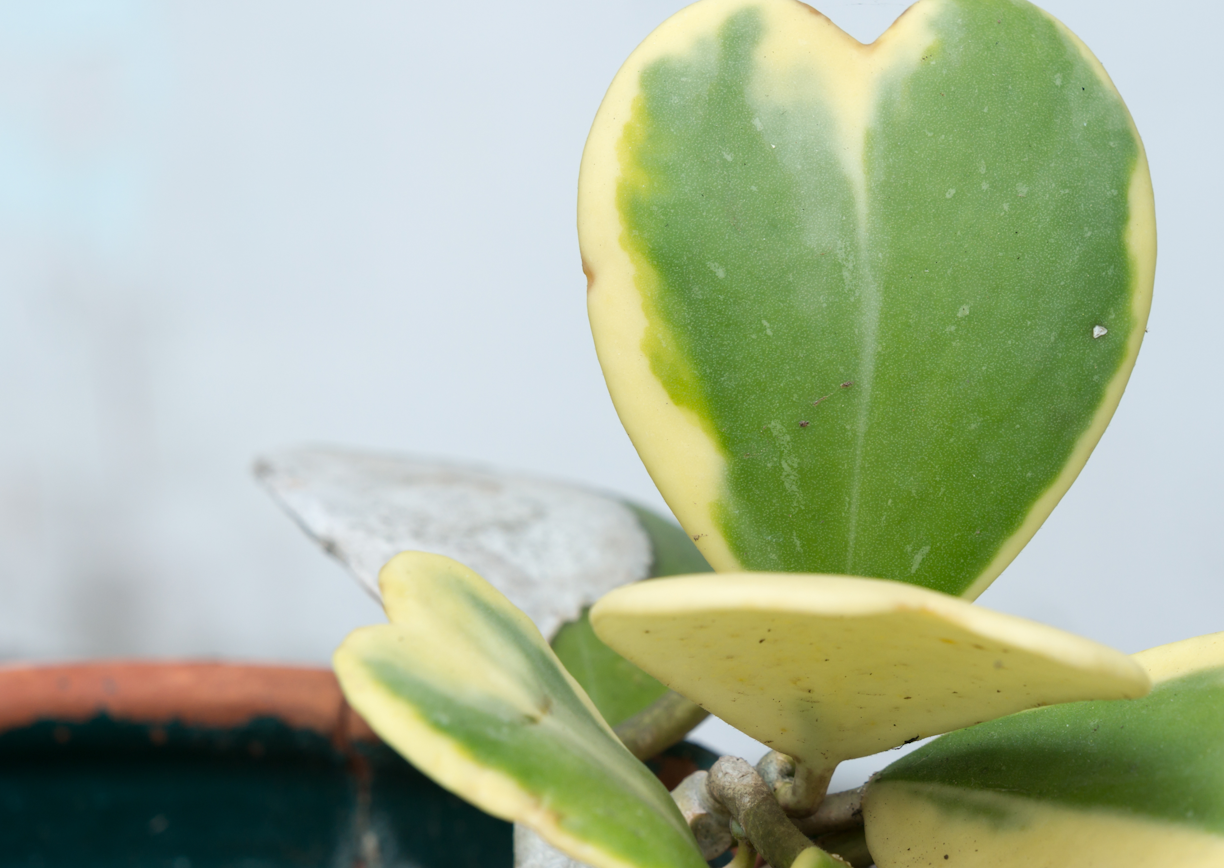
Seasonal Considerations for Propagation
Let’s take a look at some seasonal considerations for propagation.
Spring and Summer
When in the UK, it is certainly best to do your propagating and potting in the growing season. Plants in this season are actively producing growth hormones and the likelihood of cuttings being successful is higher.
The temperature is usually a little higher and the sun a little brighter too, so keeping your cuttings happy is less of a difficult endeavour.
Autumn and Winter
During the winter months, Hoya enter a state of dormancy where they photosynthesize minimally and reserve their energy to survive. Resultantly, having cuttings propagating during this time is less likely to yield positive outcomes.
Hoya registers its dormancy period by the temperature and length of day (or amount of time receiving sunlight), so dormancy can easily be skipped using an indoor, grow-light setup.
There is a guide to overwintering your plants on our website here, and further, a guide to grow lights here. Armed with these, you should have everything you need to successfully disregard the dormancy period if you wish!
Conclusion
Propagating Hoya is by no means a difficult feat, and when successful, can be a really positive and exciting experience. What’s not to love about making even more plants from the plants you already have? Share them with your friends! Share them with your Mam! Share them with your neighbours! Enemies!
Pets (Although I’m not certain they’d really appreciate it)! or greedily keep them all to yourself until every inch of your home is covered with the waxy leaves and beautiful blooms of Hoya! The beauty is, they’re yours… Do whatever you want! They really are the gift that keeps on giving… Literally!
Jonathan Davies
Jonny has worked at Root since May 2023. His love for plants was inherited initially from his grandparents and parents, but really took off once he moved into his own place, where he started picking up small plants and was fascinated by watching how they grow and change over time. Jonny has a degree in Archaeology and Classics from the University of Sheffield, and a masters in Egyptology from Swansea University, where he primarily focused on garden culture in the ancient world, which he has managed to extend to a PhD thesis in the University of Liverpool, where he has been able to combine his love for plants with his love for ancient language and culture. Jonny loves being in the natural spaces around North Wales and Cheshire where he used to go growing up, and often spends hours examining the plants and trees, and kicking up the leaf litter searching for mushrooms and insects. He is fascinated most by plant biology, taxonomy and learning about ecosystems and interactions between plants and their environmental counterparts, and enjoys tending to his varied array of houseplants, and ongoing ‘plant projects’, such as growing plants from seeds and creating living epiphyte displays. Aside from his green thumb, his other interests include: art, reading, listening to and playing music in the company of his cats, Spooky and Boo.
More by Jonathan DaviesRelated Articles
View all articles
